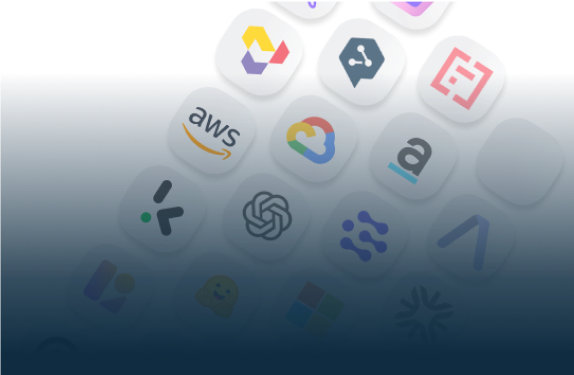
Start Your AI Journey Today
- Access 100+ AI APIs in a single platform.
- Compare and deploy AI models effortlessly.
- Pay-as-you-go with no upfront fees.

Emotion detection, also known as emotion recognition, entails breaking down written text into its constituents, analyzing them, and determining the emotional expression conveyed therein. Using machine learning and NLP algorithms, this process can pinpoint specific emotions, such as happiness, anger, and sadness.
Emotion analysis is typically favored over sentiment analysis when a more nuanced understanding of human reactions is required. While sentiment analysis categorizes text as positive, negative or neutral, emotion analysis delves deeper into identifying specific emotions like happiness, anger, sorrow or amazement.
.png)
Emotion analysis is crucial in capturing the complete spectrum of human emotions, which makes it beneficial in areas such as market research, mental health evaluation and personalised content creation. Sentiment analysis, however, is a more straightforward option and could be suitable for tasks such as assessing general customer feedback or monitoring brand reputation.

You can use Emotion Detection in numerous fields, here are some examples of common use cases:
While comparing Emotion Detection APIs, it is crucial to consider different aspects, among others, cost security and privacy. Emotion Recognition experts at Eden AI tested, compared, and used many Emotion Detection APIs of the market. Here are some actors that perform well (in alphabetical order):

Komprehend.io provides a flexible and powerful solution for natural language processing (NLP) that can be easily integrated into applications or research studies that involve textual data. The platform employs advanced machine learning algorithms and APIs to access models capable of performing several NLP tasks, including sentiment analysis, entity recognition, and emotion detection.

Lettria's API enables the extraction of emotions from textual data. The objective is to automatically classify emotions conveyed by written language, including happiness, sadness, anger, fear, and the like. This is achieved by employing algorithms that have been trained on numerous annotated texts, with the emotions they convey being manually labeled.
They employ rule-based and machine learning algorithms, in addition to customizable solutions that can be constructed on the Lettria platform, to precisely perceive emotions on the level of both individual sentences and smaller sentence parts.

NLP Cloud is an advanced artificial intelligence system that lets you make use of up-to-date AI engines and train your own engines with your own data. The Emotion Detection API is a flexible tool that works by utilizing Natural Language Processing to examine and identify emotions within textual information. It offers quick processing, supports several languages, and options to personalize outputs.
.png)
OneAI's Emotion Detection system identifies feelings expressed through written language. You can use the results to find out how people feel about particular topics, examine customer service phone calls and online conversations, and gauge the neutrality of texts.

Twinword's Emotion Detection API scans paragraphs of text to detect emotions. In total, the API categorizes six emotions: joy, anger, sadness, disgust, surprise, and fear. After performing the analysis, our Emotion Analysis API reveals which of the six emotional states were detected in the text.
The capability to detect these emotions in a paragraph of text presents new opportunities for businesses. This API facilitates the measurement and analysis of user experience for marketers, offering a fresh approach and enabling companies to tailor their website or application to customer emotions.

Vern AI has been developed to accurately detect human emotions in communication with an 80% accuracy rate. The scale ranges from 0 to 100, allowing it to predict the intended meaning of the user. The intensity of emotions experienced is displayed on the scale, providing scores for anger, sadness, fear, love, and affection.
It has achieved success in examining chatbot and virtual assistant technologies, evaluating mental health applications, and scrutinizing both internal and external organizational communications - including but not limited to those related to human resources, marketing, social media, and public relations.

Emotion Detection API performance can vary depending on several variables, including the technology used by the provider, the underlying algorithms, the amount of the dataset, the server architecture, and network latency. Listed below are a few typical performance discrepancies between several Emotion Recognition APIs:
Companies and developers from a wide range of industries (Social Media, Retail, Health, Finances, Law, etc.) use Eden AI’s unique API to easily integrate Emotion Detection tasks in their cloud-based applications, without having to build their solutions.
Eden AI offers multiple AI APIs on its platform among several technologies: Text-to-Speech, Language Detection, Sentiment Analysis, Face Recognition, Question Answering, Data Anonymization, Speech Recognition, and so forth.
We want our users to have access to multiple Emotion Detection engines and manage them in one place so they can reach high performance, optimize cost, and cover all their needs. There are many reasons for using multiple APIs :
Eden AI is the future of AI usage in companies: our app allows you to call multiple AI APIs.

The Eden AI team can help you with your Emotion Detection integration project. This can be done by:


You can start building right away. If you have any questions, feel free to chat with us!
Get startedContact sales
